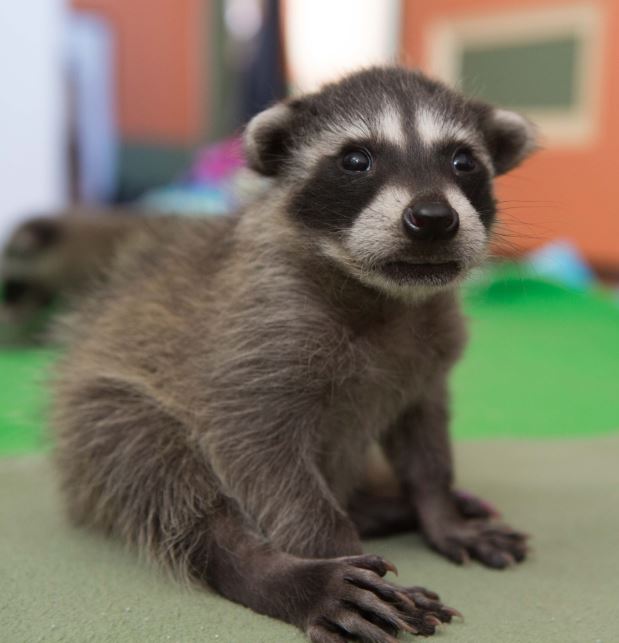
Baby Raccoon Care: A Comprehensive Guide for Wildlife Enthusiasts
Introduction
Baby raccoons, with their adorable masked faces and playful antics, can evoke a sense of wonder and compassion in anyone who encounters them. However, caring for these wild animals requires specialized knowledge and meticulous attention to their unique needs. This comprehensive guide will provide you with all the essential information you need to provide proper care for baby raccoons, ensuring their well-being and eventual release back into the wild.
Assessing the Situation
Before attempting to care for a baby raccoon, it is crucial to assess the situation carefully.
- Is the raccoon orphaned? Baby raccoons are typically found alone, but they may not be orphaned. Observe the area for signs of the mother or other raccoons. If the mother is nowhere to be found, and the baby is cold, wet, or injured, it may be orphaned.
- Is the raccoon injured? Check for any visible injuries, such as cuts, bruises, or broken bones. If the raccoon is injured, seek professional veterinary care immediately.
- Is the raccoon sick? Signs of illness include lethargy, diarrhea, vomiting, or respiratory distress. If you suspect the raccoon is sick, contact a wildlife rehabilitator or veterinarian.
Initial Care
If you have determined that the baby raccoon is orphaned and requires care, follow these initial steps:
- Warm the raccoon: Place the raccoon in a warm, dark, and quiet place. Use a heating pad set on low or a warm water bottle wrapped in a towel to provide warmth.
- Hydrate the raccoon: Offer the raccoon a small amount of water or electrolyte solution using a syringe or dropper. Do not force the raccoon to drink.
- Feed the raccoon: Baby raccoons require a special formula specifically designed for their nutritional needs. Follow the instructions on the formula carefully.
Ongoing Care
Once the raccoon’s immediate needs have been met, ongoing care involves providing a safe and nurturing environment.
- Housing: Baby raccoons need a secure and comfortable enclosure. A large cage or a dedicated room with plenty of space for movement is ideal. Line the enclosure with soft bedding, such as blankets or towels.
- Feeding: Continue feeding the raccoon the special formula every few hours. As the raccoon grows, gradually transition to a diet of solid foods, such as cooked chicken, fruits, and vegetables.
- Hygiene: Keep the raccoon’s enclosure clean by removing waste and soiled bedding regularly. Bathe the raccoon every few days using warm water and a mild soap.
- Socialization: Baby raccoons are social animals and require interaction with humans or other raccoons. Spend time with the raccoon, talking to it, playing with it, and providing it with enrichment activities, such as toys or puzzles.
Special Considerations
Caring for baby raccoons involves several special considerations:
- Nocturnal nature: Raccoons are nocturnal animals, so they will be most active at night. Adjust your care schedule accordingly.
- Wild instincts: While baby raccoons may be cute and cuddly, they are still wild animals. Always handle them with care and respect their boundaries.
- Potential hazards: Raccoons can carry diseases, such as rabies and distemper. Wear gloves when handling them and wash your hands thoroughly afterward.
- Legal implications: In many areas, it is illegal to keep raccoons as pets. Check with your local wildlife authorities for regulations regarding the care and release of raccoons.
Rehabilitation and Release
The ultimate goal of caring for a baby raccoon is to rehabilitate it and release it back into the wild. This process involves:
- Gradual weaning: As the raccoon grows, gradually reduce the frequency of feedings and introduce solid foods.
- Outdoor acclimation: Once the raccoon is fully weaned, begin introducing it to the outdoors in a secure enclosure.
- Release: When the raccoon is fully grown and has demonstrated the ability to hunt and survive on its own, it can be released back into its natural habitat.
Conclusion
Caring for baby raccoons is a rewarding but challenging experience. By following the guidelines outlined in this guide, you can provide these vulnerable animals with the care and support they need to thrive and eventually return to the wild. Remember to always prioritize the raccoon’s well-being, respect its wild nature, and seek professional assistance when necessary.
